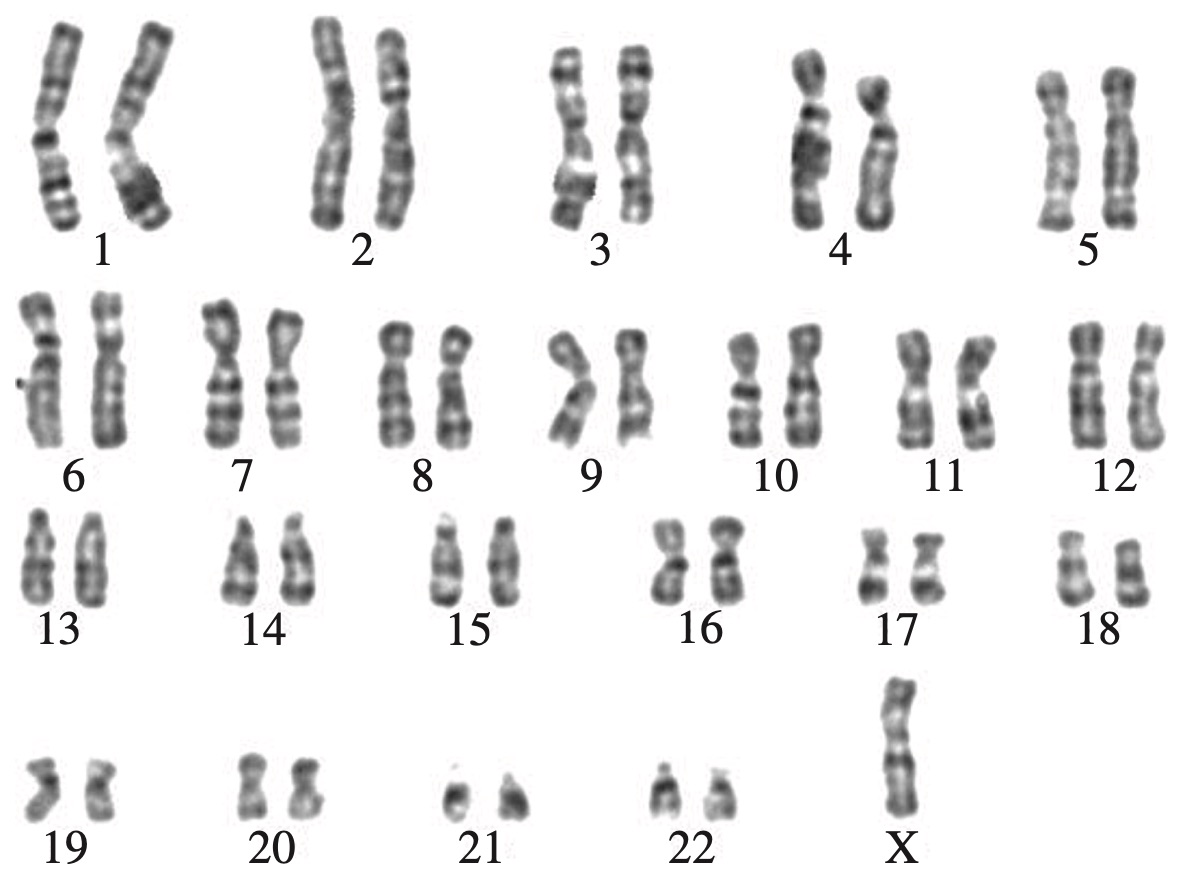The following represents a karyotype for an individual with Down syndrome.
What conclusions can be drawn about the individual from this karyotype?
- A male with a deletion mutation
- A female with a deletion mutation
- A male with a chromosomal mutation
- A female with a chromosomal mutation
